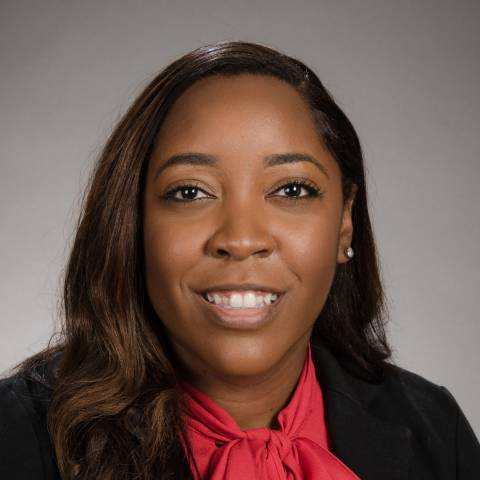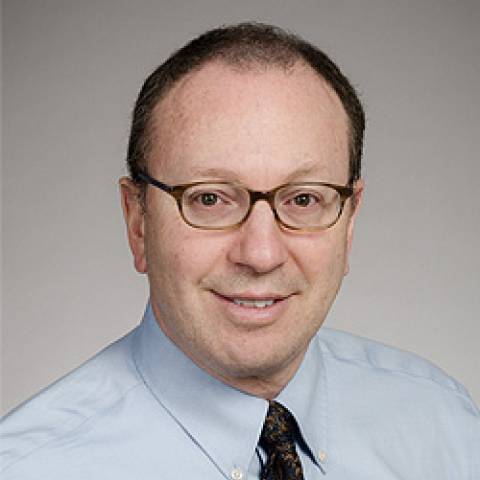Stroke
Stroke is a life-threatening emergency. Immediate and comprehensive medical care offers you the greatest chance for recovery.
Stroke
Stroke is a life-threatening emergency. Immediate and comprehensive medical care offers you the greatest chance for recovery.

Key points about stroke
- A stroke happens when blood flow to your brain is stopped. It is an emergency situation.
- It can be caused by a narrowed blood vessel, bleeding, or a clot that blocks blood flow.
- Symptoms can happen suddenly. If someone is showing any sign of a stroke, call 911 immediately.
- You have a better chance of recovering from a stroke if emergency treatment is started right away.
- How a stroke affects you depends on where the stroke occurs in your brain, and on how much your brain is damaged.
- A stroke can have a serious impact on quality of life issues for both the person and their family. Support services are available for both the person and the caregiver.
What is stroke?
A stroke, or brain attack, happens when blood flow to your brain is stopped. It's an emergency situation. Call 911 if you think you might be having a stroke or stroke symptoms.
The brain needs a constant supply of oxygen and nutrients to work well. If blood supply is stopped even for a short time, this can cause problems. Brain cells begin to die after just a few minutes without blood or oxygen.
When brain cells die, brain function is lost. You may not be able to do things that are controlled by that part of the brain. For example, a stroke may affect your ability to:
- Move
- Speak
- Eat, drink, and swallow
- See clearly
- Think and remember
- Solve problems
- Control your bowel and bladder
- Control your emotions
- Control other vital body functions
A stroke can happen to anyone at any time.
What are the symptoms of stroke?
A stroke is an emergency situation. It’s important to know the signs of a stroke and get help quickly. Call 911 or your local emergency number right away. Treatment is most effective when started right away.
Stroke symptoms may happen suddenly. Each person’s symptoms may vary. Symptoms may include:
- Weakness, drooping, or numbness of the face, arm, or leg, usually on one side of the body
- Having trouble reading, speaking or understanding
- Problems with vision, such as dimness or loss of vision in one or both eyes
- Dizziness or problems with balance or coordination
- Problems with movement or walking
- Fainting (loss of consciousness) or seizure
- Severe headaches with no known cause, especially if they happen suddenly
Other less common symptoms of stroke may include:
- Sudden nausea or vomiting not caused by a viral illness
- Brief loss or change of consciousness, such as fainting, confusion, seizures, or coma
- TIA (mini-stroke)
A TIA is a serious condition and can cause many of the same symptoms as a stroke. But TIA symptoms pass, while stroke symptoms don't. They can last for a few minutes or up to 24 hours. Call for medical help right away if you think someone is having a TIA. An immediate medical evaluation is critical because the TIA symptoms may be a warning sign that a stroke is about to occur. But not all TIAs are followed by a stroke.
When should I contact my doctor?
When it comes to stroke, seek care as soon as possible. The acronym FAST is an easy way to remember the signs of stroke and when to call 911.
Call 911 immediately if:
F - Face drooping. One side of the face is drooping or numb. When the person smiles, the smile is uneven.
A - Arm weakness. One arm is weak or numb. When the person lifts both arms at the same time, one arm may drift downward.
S - Speech difficulty. You may notice slurred speech or difficulty speaking. The person can't repeat a simple sentence correctly when asked.
T - Time to call 911. If someone shows any of these symptoms, call 911 right away. Call even if the symptom goes away. Make note of the time the symptoms first appeared.
Call your doctor if:
- You think you might be at risk for developing a stroke.
Stroke care at UW Medicine
The UW Medicine Stroke Centers treat the most complex stroke cases in the region and are certified by the Joint Commission. A team of passionate, experienced experts — emergency medicine physicians, neurologists, neuro- and vascular surgeons, radiologists, physical and occupational therapists, speech and language pathologists, and nurses — work together to provide you with comprehensive stroke care.
If you are diagnosed with severe stroke, you will be admitted to the neurological stroke and trauma intensive care unit for ongoing assistance. Once you begin to improve, you may move to a neurology unit and then receive treatment in a rehabilitation center before returning home. For nonemergency situations, you may be referred to a stroke clinic for further testing, diagnosis and preventive care.
If you or a loved one suffers from a stroke, you can find expert outpatient care at the Rehabilitation Medicine Clinic at Harborview Medical Center, the Stroke Clinic at Harborview Medical Center, UW Medical Center – Northwest Primary Stroke Center and Valley Stroke Center. All of our clinics are dedicated to patient-centric, preventive care for patients recovering from a stroke or TIA and people who are at risk of developing a stroke.
Rehabilitation after a stroke helps patients regain as much independence and quality of life as possible, and can help patients physically, emotionally, socially and spiritually. In addition, UW Medicine offers The Stroke Club, monthly virtual support and educational meetings for patients and families.
Comprehensive stroke care and rehabilitation
UW Medicine doctors specializing in stroke
Arielle Patricia Davis M.D.
Medical Specialties
Appointments
206.520.5000Location
Breana L. Taylor, MD
Medical Specialty
Appointments
206.744.9311Location
David L. Tirschwell M.D., M.Sc.
Medical Specialties
Appointments
206.744.9311Location
UW Medicine locations specializing in stroke emergency care
Emergency Department at Harborview
Medical Specialty
Hours Today
Contact
Emergency Department at UW Medical Center - Northwest
Medical Specialty
Hours Today
Contact
Emergency Department at Valley Medical Center
Medical Specialty
Hours Today
Contact
What causes stroke?
A stroke is caused when blood flow to your brain is stopped or disrupted.
There are 2 kinds of stroke: ischemic and hemorrhagic.
- Ischemic stroke. This is the most common type of stroke. It happens when a blood vessel in the brain is blocked. It may be blocked by a blood clot. Or it may be blocked by a buildup of fatty deposit and cholesterol. This buildup is called plaque.
- Hemorrhagic stroke. This occurs when a blood vessel in your brain bursts, spilling blood into nearby tissues. With a hemorrhagic stroke, pressure builds up in the nearby brain tissue. This causes even more damage and irritation.
Who is at risk for stroke?
Anyone can have a stroke at any age. But your chance of having a stroke increases if you have certain risk factors. Some risk factors for stroke can be changed or managed, while others can’t.
Risk factors for stroke that can be changed, treated, or medically managed:
- High blood pressure. Blood pressure of 140/90 mm/Hg or higher can damage blood vessels (arteries) that supply blood to the brain.
- Heart disease. Heart disease is the second most important risk factor for stroke, and the major cause of death among survivors of stroke. Heart disease and stroke have many of the same risk factors.
- Diabetes. People with diabetes are at greater risk for a stroke than someone without diabetes.
- Smoking. Smoking almost doubles your risk for an ischemic stroke.
- Birth control pills (oral contraceptives)
- History of TIAs (transient ischemic attacks). TIAs are often called mini-strokes. They have the same symptoms as stroke, but the symptoms don’t last. If you have had one or more TIAs, you are almost 10 times more likely to have a stroke than someone of the same age and sex who has not had a TIA.
- High red blood cell count. A significant increase in the number of red blood cells thickens the blood and makes clots more likely. This raises the risk for stroke.
- High blood cholesterol and lipids. High cholesterol levels can contribute to thickening or hardening of the arteries (atherosclerosis) caused by a buildup of plaque. Plaque is deposits of fatty substances, cholesterol, and calcium. Plaque buildup on the inside of the artery walls can decrease the amount of blood flow to the brain. A stroke occurs if the blood supply is cut off to the brain.
- Lack of exercise
- Obesity
- Excessive alcohol use. More than 2 drinks per day raises your blood pressure. Binge drinking can lead to stroke.
- Illegal drugs. IV (intravenous) drug abuse carries a high risk of stroke from blood clots (cerebral embolisms). Cocaine and other drugs have been closely linked to strokes, heart attacks, and many other cardiovascular problems.
- Abnormal heart rhythm. Some types of heart disease can raise your risk for stroke. Having an irregular heartbeat (atrial fibrillation) is the most powerful and treatable heart risk factor of stroke.
- Cardiac structural abnormalities. Damaged heart valves (valvular heart disease) can cause long-term (chronic) heart damage. Over time, this can raise your risk for stroke.
Risk factors for stroke that can’t be changed:
- Older age. For each decade of life after age 55, your chance of having a stroke more than doubles.
- Race. African-Americans have a much higher risk for death and disability from a stroke than whites. This is partly because the African-American population has a greater incidence of high blood pressure.
- Gender. Stroke occurs more often in men, but more women than men die from stroke.
- History of prior stroke. You are at higher risk for having a second stroke after you have already had a stroke.
- Heredity or genetics. The chance of stroke is greater in people with a family history of stroke.
Other risk factors include:
- Where you live. Strokes are more common among people living in the southeastern U.S. than in other areas. This may be because of regional differences in lifestyle, race, smoking habits, and diet.
- Temperature, season, and climate. Stroke deaths occur more often during extreme temperatures.
- Social and economic factors. There is some evidence that strokes are more common among low-income people.
How is stroke diagnosed?
Your healthcare provider will take a complete health history and do a physical exam. You will need tests for stroke such as brain imaging and measuring the blood flow in the brain. Tests may include:
- CT scan of the brain. An imaging test that uses X-rays to take clear, detailed images of the brain. A brain CT scan can show bleeding in the brain or damage to brain cells caused by a stroke. It's used to find abnormalities and help find the location or type of stroke.
- MRI. This test uses a combination of large magnets, radiofrequencies, and a computer to make detailed images of organs and structures in the body. An MRI uses magnetic fields to find small changes in brain tissue that help to find and diagnose stroke.
- CTA (computed tomographic angiography). An X-ray image of the blood vessels. A CT angiogram uses CT technology to get images of blood vessels.
- MRA (magnetic resonance angiography). This test uses MRI technology to check blood flow through the arteries.
- Doppler sonography (carotid ultrasound). A test that uses sound waves to create pictures of the inside of your carotid arteries. This test can show if plaque has narrowed or blocked your carotid arteries.
- Angiography. A catheter is inserted through your arteries. Dye is injected and pictures are taken.
The following heart tests may also be used to help diagnose heart problems that may have led to a stroke:
- Electrocardiogram (ECG). This test records your heart’s electrical activity. It shows any irregular heart rhythms that may have caused a stroke.
- Echocardiography. This test uses sound waves to create a picture of your heart. This test shows the size and shape of your heart. It can check if the heart valves are working properly. It can also see if there are blood clots inside your heart.
How is stroke treated?
Treatment will depend on your symptoms, age, and general health. It will also depend on how severe the condition is.
Advanced medical and surgical treatments are available. Some of these treatments can restore blood flow to the brain. Other treatments can help reduce your risk for another stroke.
Treatment is most effective when started right away. Emergency treatment after a stroke may include:
- Clot-busting medicines (thrombolytics or fibrinolytics). These medicines dissolve the blood clots that cause an ischemic stroke. They can help reduce the damage to brain cells caused by the stroke. To be most effective, they must be given within 3 hours of a stroke occurring.
- Medicines and therapy to reduce or control brain swelling. Special types of IV (intravenous) fluids are often used to help reduce or control brain swelling. They are used especially after a hemorrhagic stroke.
- Neuroprotective medicines. These medicines help protect the brain from damage and lack of oxygen (ischemia).
- Life support measures. These treatments include using a machine to help you breathe (a ventilator), having IV fluids, getting proper nutrition, and controlling your blood pressure.
- Craniotomy. This is a type of brain surgery that is done to remove blood clots, relieve pressure, or repair bleeding in the brain.
What are possible complications of stroke?
Recovery from stroke and the specific ability affected depends on the size and location of the stroke.
A small stroke may cause problems such as mild weakness in your arm or leg.
Larger strokes may cause parts of your body to not be able to move (be paralyzed). Larger strokes can also cause loss of speech or even death.
What can I do to prevent stroke?
Know your risk for stroke. Many stroke risk factors can be changed, treated, or medically modified. Some things you can do to control your risk factors are listed below.
Lifestyle changes
A healthy lifestyle can help reduce your risk for stroke. That includes the following:
- Stop smoking, if you smoke.
- Make healthy food choices. Be sure to get the recommended amounts of fruits, vegetables, and whole grains. Choose foods that are low in animal fat, trans fat, cholesterol, salt (sodium), and added sugars.
- Stay at a healthy weight.
- Be physically active on a daily basis.
- Limit alcohol use.
Medicines
Take your medicines as instructed by your healthcare provider. The following medicines can help prevent stroke:
- Blood-thinning medicines (anticoagulants) help prevent blood clots from forming. If you take a blood thinner, you may need regular blood tests.
- Antiplatelets, such as aspirin, are prescribed for many stroke patients. They make blood clots less likely to form. Aspirin is available over the counter.
- Blood-pressure medicines help lower high blood pressure. You may need to take more than one blood-pressure medicine.
- Cholesterol-lowering drugs make plaque less likely to build up in your artery walls, which can reduce the risk for stroke.
- Heart medicines can treat certain heart problems that increase your risk for stroke.
- Diabetes medicines adjust blood sugar levels. This can prevent problems that lead to stroke.
Surgery
Several types of surgery may be done to help treat a stroke, or help to prevent one. These include:
- Carotid endarterectomy. Carotid endarterectomy is surgery to remove plaque and clots from the carotid arteries, located in the neck. These arteries supply the brain with blood from the heart. Endarterectomy may help stop a stroke from occurring
- Carotid stenting. A large metal coil (stent) is placed in the carotid artery much like a stent is placed in a coronary artery.
- Surgery to repair aneurysms and AVMs (arteriovenous malformations). An aneurysm is a weakened, ballooned area on an artery wall. It's at risk for bursting (rupturing) and bleeding into the brain. An AVM is a tangle of arteries and veins. It interferes with blood circulation and puts you at risk for bleeding.
- PFO (patent foramen ovale) closure. The foramen ovale is an opening that occurs in the wall between the 2 upper chambers of the heart. This opening usually closes right after birth. If the flap does not close, any clots or air bubbles can pass into the brain circulation. This can cause a stroke or TIA (transient ischemic attack). However, experts are still debating whether the PFO should be closed.
- Heart surgery to close off part of the atrium (left atrial appendage closure). This can reduce the risk for stroke from blood clots forming in the heart.
Living with stroke
How a stroke affects you depends on where the stroke occurs in your brain. It also depends on how much your brain is damaged.
Many people who have a stroke are left with paralysis of one of their arms.
Other problems can include having trouble with:
- Thinking
- Speaking
- Walking
- Swallowing, eating, or drinking
- Doing simple math such as adding, subtracting, or balancing a checkbook
- Basic problem solving
- Dressing
- Showering
- Going to the bathroom
Some people may need long-term physical rehabilitation. They may not be able to live in their home without help.
Support services are available to help with physical and emotional needs after a stroke. This includes support services for caregivers.






